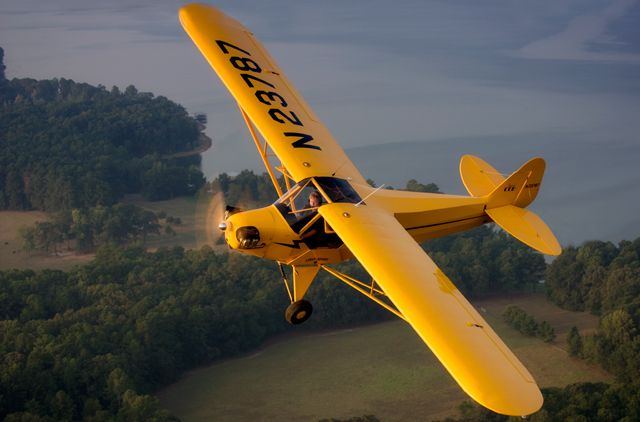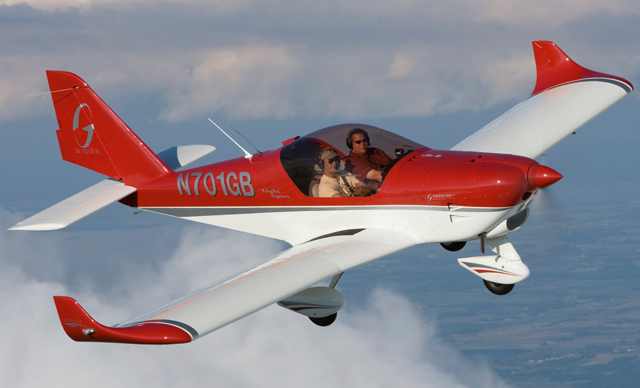Sun-n-Fun in April 2015 will mark the 10th anniversary of the introduction of the light-sport aircraft sector in the USA. Both Evektor and Flight Design obtained their S-LSA certificates on the opening day of that 2005 show. Conceived by the FAA as a way to bring ultralights under FAA influence and as a reaction to the hodgepodge of European ultralight regulations (where each country has its own standards), the then-FAA administrator, Marion Blakey, expected 9,000 US-registered light-sport aircraft by 2015.
Light-sport aircraft are simple single or two-seat aircraft, with a fixed-gear and piston engine, weighing no more than 600kg (1,320lb) or 650kg in the case of a seaplane or amphibian.
Differing standards
Instead of the regulator in the form of the US Federal Aviation Administration writing the standard that these aircraft are designed to, ASTM International acts in its place. The FAA and latterly EASA have seats on these standards writing and updating committees. The authorities then specify which standards and revisions they have adopted. Using ASTM International for standard writing, updating and promulgation enables much quicker changes and modifications than EASA and the FAA’s internal mechanisms.
In the
Accident rates
The first 10 years have shown that light-sport aircraft accident rates in the
As a greater proportion of light-sport aircraft are used for flight training, the better comparison is with equivalent two-seat certificated aircraft. One noticeable improvement is that fatalities from accidents are lower in light-sport aircraft. Modern design, crashworthiness knowledge and better materials contribute to this.

Cub types have accounted for one-third of all LSA sales for he past three years
Legend Aircraft
Loss rates
Insurance companies have reported that average light-sport aircraft losses are higher than in the general aviation fleet. Contributing to this are multiple factors: a lack of available spare structural parts close to market; a lack of personnel experienced with the newer aircraft and the fact that structural repairs must be documented and approved by the light-sport aircraft manufacturer, rather than being signed off by the repairing organisation.
The first two are improving over time. The third is a major ethos change in the way aircraft are supported. Loss values will remain higher for light-sport aircraft for this reason.
The numbers
From a standing start in 2005, US S-LSA (factory-built light-sport aircraft) registrations currently account for 20% of total single-engine piston deliveries worldwide, as reported by GAMA. Impressive as that number is, it only accounts for deliveries within the
What can be said is that light-sport aircraft represent a significant proportion of single-engine piston deliveries every year. Without accurate information from each market worldwide, the 20% number likely under-represents the scale and scope of light-sport aircraft's success.
Trends
It is rare to see a light-sport aircraft that has the minimum equipment. Buyers in this market expect the latest in glass-panel technologies, multiple redundancy and sophisticated autopilots. The average S-LSA sales price is $178,000, despite a base price average closer to $120,000. Avionics manufacturers are responding. Dynon Avionics and Garmin are the two dominant suppliers. In 2011, Garmin hired a team solely responsible for light-sport and experimental aircraft. After matching Dynon’s price point, it has continued to innovate. Garmin's G3X Touch system, introduced last year, provides an airliner level of cockpit. Last month, Garmin introduced flight envelope protection for Garmin autopilot-equipped aircraft.
Engine manufacturers are also investing in the light-sport sector. Rotax’s latest fuel-injected 912iS series engine consumes 20% less fuel at the same power output of its previous engine. Buyers are prepared to pay a premium to have this technology. Lycoming’s O-233 and Continental’s O-200D engines were also developed specifically for the light-sport market. Produced exclusively for the Cubcrafters Carbon Cub, ECI’s 180hp (134kW) Titan engine has also had a great production run.
Seaplanes are hot property in the light-sport sector. Icon’s A5 launch in July 2008 really opened up this market. Icon’s approach is interesting. Instead of selling to an informed pilot market, it has targeted customers interested in water sports and adventure. Its aircraft is being offered as a “lifestyle enhancer”. Icon plans to offer pilot training as part of the sale of its aircraft. Deliveries are due to start in the fourth quarter of 2015. With over 1,000 deposits, Icon's approach may just be what this market needs to expand dramatically. Cirrus is currently working with Icon to produce composite sub-assemblies for the Icon A5. Competing options include MVP Aero, Super Petrel from
"Modernised" Cubs are doing exceptionally well. Cub types have accounted for one-third of all light-sport aircraft sales for the past three years. When all other tail dragger options are included, this rises to 45%. CubCrafters, based in
Traditional GA manufacturers are staying away. Cessna, Piper and Cirrus entered and exited the light-sport market. Diamond is on record as saying that it will not produce a light-sport aircraft. The typical buyer is more interested in the joy of flying, rather than productivity gain. Light-sport aircraft operating margins are not as high as general aviation manufacturers like. With over 100 aircraft options, it’s also a lot more competitive.
Successful manufacturers are moving into traditional certificated aircraft markets. Flight Design’s new C4 is expected to launch in 2016. Tecnam has certificated several aircraft including its P2006 Twin and P2010 four-place single. Evektor is working on a turbine multi-engine aircraft. Located in

Gobosh markets its 700s as a luxury LSA
Gobosh
Regulation evolves
The FAA's Sport Pilot Rule introduced new categories of aircraft, pilots and maintenance personnel. The regulations lowered the cost of entry from around $10,000 to $5,000 for new pilots in the
Initial design standards grew out of the joint aviation requirements – very light aircraft (JAR-VLA). There is constant debate on the weight limit being arbitrarily set at 600kg. Commentators complain that aircraft are too light and as a result, more difficult to fly. This is true, but the fault is not with the weight limit, but on the mandated 45kt (83km/h) maximum stall speed. Making this a minimum, rather than a maximum stall speed would have allowed for smaller wings, higher wing loadings, greater cross-wind capabilities and easier-to-fly aircraft. Limiting speed to 120kt was designed to discourage what happened to ultralights in
In the
Traditional aircraft certification requires the FAA to witness and audit each stage of the design verification. Under the light-sport aircraft rule, the FAA passed complete responsibility for the validation of conformance to the manufacturer. Each manufacturer signs a declaration that the aircraft conforms to the standards applicable at the time the airworthiness certificate is granted. This grants the FAA permission to audit the producer’s records at any time. In practice, the FAA audits compliance to the standards before granting an initial Certificate of Airworthiness for a new type. Shortened and less expensive development cycles mean manufacturers can iterate and improve their products much faster than traditional certificated aircraft producers, providing buyers with better and more up-to-date options.
The contribution of light-sport aircraft to General Aviation is only beginning to be felt. With more than 130 aircraft designs now available; speed of innovation far surpasses that of traditional general aviation. Significantly shortened development cycles mean some designs are on their fourth iteration in only 10 years. The light-sport aircraft development cycle is now on par with that in the automotive sector. Adopting new technologies (such as glass cockpits, night vision or new safety systems) is much easier for light-sport aircraft manufacturers, providing better results for end-users. Testament to the success of the sector is the fact that Part 23’s upcoming revision is standards-driven. The FAA and EASA expect to replace their Part 23 rules with ASTM International standards.
In the USA, the EAA and AOPA are on a drive to remove the Class III medical requirement for aircraft no more than six seats used in non-commercial flying. Ten years of data from pilots operating with only sport pilot privileges conclusively shows that the incidence of airborne incapacitation is almost statistically identical to that of the wider pilot population. There is no statistical evidence that enforcing a medical on private flying makes it safer.
Design, production and certification standards harmonisation worldwide would significantly enhance prospects for light-sport manufacturers. A global standard would level barriers between markets and open up choices for buyers. Adopting the FAA’s audit of conformance to standards rather than validation of standards significantly shortens development cycles and reduces total investment to economic levels. Pipistrel’s chief executive, Ivo Boscarol puts it best: “We are waiting for the day to come, where light-sport aircraft standards will be unified around the world, so we can focus on aircraft development and not their tailoring for each authority separately.”
Source: Flight International



















